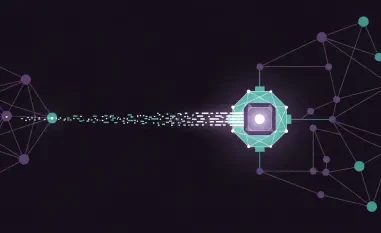In the rapidly evolving world of industrial operations, artificial intelligence (AI) stands at the forefront of cybersecurity for operational technology (OT) and industrial control systems (ICS), which are vital to sectors like manufacturing, energy, and critical infrastructure. As these environments become increasingly interconnected through the convergence of OT and IT, the demand for advanced security solutions has never been greater. AI promises to revolutionize threat detection and response, offering a lifeline to industries grappling with sophisticated cyber risks. However, this powerful technology also presents a darker side, as malicious actors exploit its capabilities to craft devastating attacks. The dual nature of AI in this context raises critical questions about balancing innovation with vulnerability. This exploration delves into how AI transforms security practices in industrial settings while simultaneously posing significant challenges, highlighting the need for a cautious and strategic approach to its adoption.
Harnessing AI for Enhanced Security
The transformative potential of AI in bolstering OT/ICS cybersecurity cannot be overstated, particularly in environments where downtime or breaches can lead to catastrophic consequences. By processing enormous volumes of data at unprecedented speeds, AI-driven tools excel at identifying subtle anomalies that may signal a cyber threat. For instance, a slight deviation in the operation of a factory robot or an unusual command from a programmable logic controller can be flagged instantly. Beyond detection, AI supports predictive maintenance by spotting irregular equipment behavior that might indicate malware or tampering. This proactive capability not only mitigates risks but also minimizes operational disruptions, ensuring that industries maintain continuity even under threat. As cyber risks grow more complex, AI’s ability to adapt and learn from new patterns positions it as an indispensable ally for security teams striving to stay ahead of evolving dangers.
Furthermore, AI enhances efficiency by automating threat responses, a critical advantage in high-stakes industrial settings where every second counts. Consider a scenario where a breach in a power grid’s control system is detected and isolated in real-time, preventing widespread outages or damage. Such rapid containment is often beyond the reach of traditional security measures, which rely heavily on manual intervention. AI’s automation reduces the burden on human operators, allowing them to focus on strategic decision-making rather than repetitive tasks. Additionally, network segmentation powered by AI helps create barriers within systems, ensuring that a breach in one area does not cascade across an entire operation. This layered defense approach is vital as industrial networks become more interconnected, amplifying the potential impact of a single vulnerability. AI, in this capacity, acts as a force multiplier, equipping organizations with tools to navigate an increasingly hostile digital landscape.
The Threat of AI in Malicious Hands
While AI offers remarkable benefits for cybersecurity, its capabilities take on a sinister edge when exploited by cybercriminals targeting OT/ICS environments. Sophisticated attackers now leverage AI to develop adaptive malware that evolves to bypass conventional defenses, which often depend on static threat signatures. Even more concerning is the use of AI-generated deepfakes, where fabricated audio or visuals mimic trusted individuals to deceive employees into granting access or approving unauthorized changes. These tactics have amplified the effectiveness of phishing attacks, with real-world consequences evident in ransomware incidents that have crippled entire industries, costing millions in damages. The ability of AI to enhance deception and evasion makes it a formidable weapon, challenging the very systems designed to protect critical infrastructure from harm.
Equally troubling is the vulnerability of AI systems themselves to manipulation by adversaries seeking to undermine industrial security. By introducing adversarial data, attackers can trick AI models into ignoring genuine threats or generating excessive false positives, eroding trust in the technology. This tactic exploits a fundamental flaw: AI’s effectiveness hinges on the quality of the data it processes. Recent industry surveys reveal a stark reality, with a significant percentage of organizations reporting security incidents in just one year, underscoring the growing prevalence of such advanced threats. The misuse of AI not only amplifies the sophistication of attacks but also exposes a critical paradox—technology meant to safeguard can become a liability if not adequately protected. As industrial systems face escalating risks, the potential for AI to be turned against its creators highlights the urgent need for robust safeguards and continuous vigilance.
Striking a Balance in AI Implementation
The enthusiasm for integrating AI into OT/ICS cybersecurity is palpable, with a substantial number of manufacturing leaders planning to adopt such technologies in the near future. However, this rush to innovate must be tempered by an awareness of the inherent risks, particularly the danger of over-reliance on AI without thorough validation. Unchecked dependence can lead to vulnerabilities, such as manipulated models or an overload of false alerts, which may desensitize teams to real threats. The convergence of OT and IT, while driving operational efficiency, has significantly expanded the attack surface, making it imperative to implement AI with a clear strategy. Without careful planning, the very technology intended to fortify defenses could introduce new weaknesses, leaving industrial systems exposed to exploitation in an already perilous cyber environment.
To mitigate these risks, organizations must prioritize a disciplined approach to AI deployment, grounding their efforts in established security frameworks like NIST 800-82 and IEC 62443. Embedding a “secure-by-design” philosophy from the outset ensures that security is not an afterthought but a foundational element of AI systems. Regular testing and validation of models, including AI-driven penetration testing to uncover potential flaws, are crucial steps to prevent adversarial interference. Moreover, fostering a culture of continuous improvement allows industries to adapt AI tools to emerging threats without compromising safety. By balancing the drive for innovation with stringent oversight, organizations can harness AI’s potential to enhance OT/ICS cybersecurity while minimizing the likelihood of it becoming a conduit for chaos. This measured strategy is essential to navigating the intricate landscape of modern industrial security.
Future Pathways for Safe AI Integration
Looking ahead, the journey of integrating AI into OT/ICS cybersecurity demands a commitment to evolving best practices that address both current and emerging challenges. Industry leaders must invest in ongoing research to refine AI algorithms, ensuring they remain resilient against increasingly sophisticated attacks. Collaboration across sectors can also play a pivotal role, as sharing insights on AI-driven threats and defenses fosters a collective resilience. Additionally, regulatory bodies may need to develop clearer guidelines to standardize secure AI adoption in industrial contexts, providing a roadmap for organizations to follow. These forward-thinking measures are vital to sustaining the benefits of AI while curbing its potential downsides in protecting critical systems.
Equally important is the need to build human expertise alongside technological advancements, ensuring that security teams are equipped to oversee and complement AI systems. Training programs focused on understanding AI’s strengths and limitations can empower professionals to make informed decisions, avoiding blind trust in automated tools. Furthermore, periodic audits of AI implementations can help identify gaps before they are exploited, reinforcing a proactive stance. As the cyber threat landscape continues to shift, staying agile through adaptive strategies will be key to leveraging AI effectively. By prioritizing a blend of innovation, education, and accountability, industries can chart a path where AI serves as a steadfast protector rather than a potential peril in the realm of OT/ICS cybersecurity.













